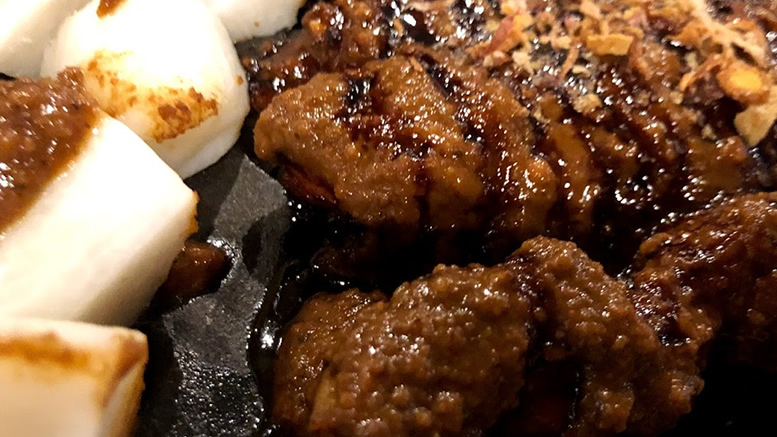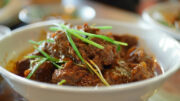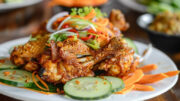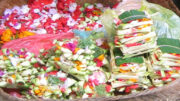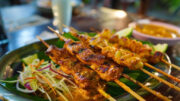Indonesia, a nation with a predominantly Muslim population, comprises approximately 13,000 islands spanning from Sumatra to Irian Jaya. Its cuisine mirrors the diverse tapestry of its people and bears influences from centuries of trade with various nations.
The main meal in Indonesia is traditionally served at midday, with dishes prepared in the morning and laid out simultaneously. Family members, starting with the eldest, partake in the feast, serving with spoons and eating with their right hands. A staple of Indonesian cuisine is the cone-shaped pile of long-grain, highly polished rice, often flavored with coconut milk—a common ingredient in Indonesian cooking. Other flavorings include coriander, pepper, garlic, turmeric, cassia, bay leaf, anise, ghee, ginger, tamarind, galangal, cardamom, lemongrass, scallions, shallots, peanuts, dried anchovies, and prawns.
Rice plays a central role in Indonesian cooking, accompanied by various dishes such as soups, salads, and main courses. A hallmark of Indonesian cuisine is the array of relishes known as Sambals, which accompany almost every meal, adding a burst of flavor and heat.
Popular Indonesian dishes like satay, Beef Rendang, and Sambals have gained recognition beyond Indonesia’s borders, with variations found in neighboring countries like Malaysia and Singapore. Other Indonesian favorites include Gado Gado, a vegetable dish served with spicy sauce, and Ikan Pangang, broiled fish marinated in a spicy blend. Given its status as an island nation, Indonesia boasts an abundance of seafood options, featured prominently on menus across the country.
Indonesian cuisine also showcases the country’s diverse culinary influences, which range from Indian and Chinese to Dutch and Portuguese. The use of spices like cloves, nutmeg, and cinnamon reflects Indonesia’s history as a major trading hub, while dishes like nasi goreng (fried rice) and mie goreng (fried noodles) highlight the Chinese influence on Indonesian cooking.
One cannot discuss Indonesian cuisine without mentioning its vibrant street food culture. From bustling night markets to roadside stalls, Indonesia’s streets come alive with the sights, sounds, and smells of sizzling satay skewers, crispy gorengan (fried snacks), and fragrant nasi uduk (coconut rice). Street vendors offer a diverse array of dishes, each packed with bold flavors and culinary creativity.
In addition to savory dishes, Indonesian cuisine is also renowned for its array of sweet treats and desserts. From sticky rice cakes like klepon and lupis to decadent desserts like es teler (mixed fruit dessert with coconut milk) and es campur (mixed shaved ice), Indonesian sweets are a delightful blend of flavors and textures.

